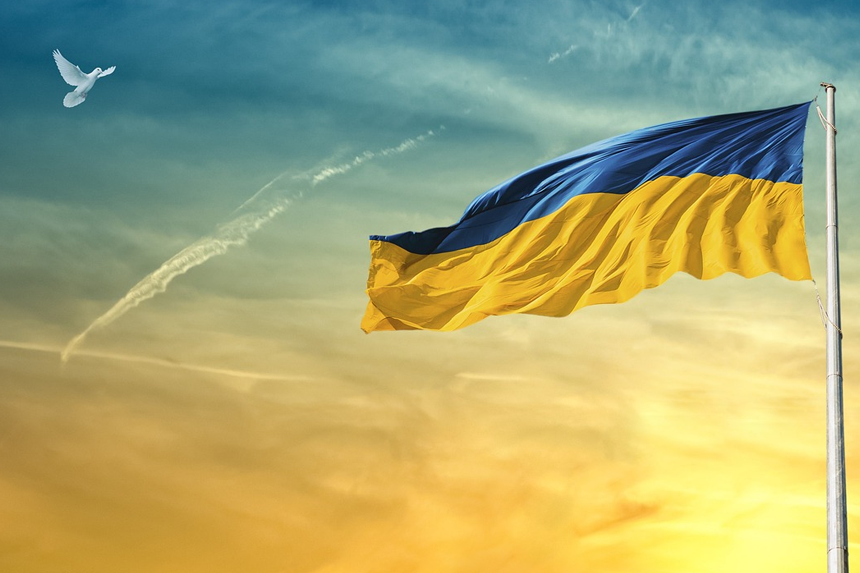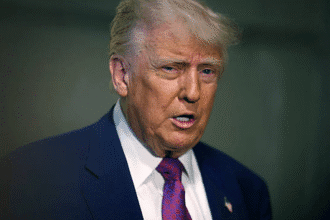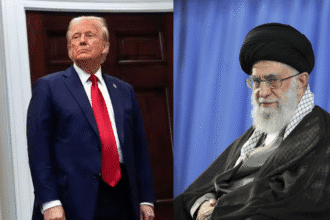As the year draws to a close, Russia’s president, Vladimir Putin, remarked on the dramatic changes unfolding in the ongoing Ukraine conflict. “I must say that the situation is changing dramatically,” he declared during his end-of-year news conference in December. “There is movement along the entire front line. Every day.”
- Is Global Politics Shifting in Ukraine’s Favor?
- How Will Trump Approach the War?
- Why Is Ukraine Opposed to Negotiations with Russia?
- What Is Zelensky’s "Victory Plan" and How Does It Involve NATO?
- What Guarantees Does Ukraine Need for Long-Term Security?
- How Are Western Allies Supporting Ukraine in Its Defense?
- Conclusion: What Does the Future Hold for Ukraine?
In eastern Ukraine, the Russian war machine is gradually pushing forward, advancing mile by mile across the wide open fields of the Donbas region, overtaking towns and villages in its wake. As the war continues to escalate, civilians are fleeing the frontline. Some leave at the first sign of danger, while others wait until the shells begin exploding around them, hastily gathering belongings and heading westward to safety.
Despite Ukraine’s reputation for bold asymmetric tactics against its much larger neighbor, Russia is gaining ground at an alarming rate. The progress of Russian forces is faster than at any point since they launched their full-scale invasion in February 2022. As the Ukraine conflict enters its third year, the human toll is staggering, with an estimated one million people either killed or wounded. It appears that Ukraine is losing ground.
Is Global Politics Shifting in Ukraine’s Favor?
As the war intensifies, global politics are also shifting. In Washington, the unpredictable former president Donald Trump, no friend of Ukraine or its leader, is preparing to take office once again.
Trump, who has repeatedly expressed frustration with the war, has made bold promises about how he would handle the conflict. “The numbers of dead young soldiers lying on fields all over the place are staggering,” he has remarked. “It’s crazy what’s taking place.”
With Trump’s incoming administration, many are wondering if 2025 could be the year that this devastating European conflict comes to a close. But if so, what might the endgame look like?
How Will Trump Approach the War?
Trump has vowed to end the war “within 24 hours” of taking office, a claim that many regard as grandiose, but it signals a leader who has lost patience with the war and America’s continued involvement. His statement reflects his belief that the conflict has gone on long enough, with the human and financial costs spiraling out of control.
However, experts argue that Trump faces twin challenges as he inherits the situation:
“First, they’re going to inherit a war on a very negative trajectory, without a tremendous amount of time to stabilize the situation,” an expert noted. “Second, they’re going to inherit it without a clear theory of success.”
Trump has given some hints about his approach to the war. In an interview, he expressed his vehement opposition to the Biden administration’s decision to allow Ukraine to use US-supplied long-range missiles against Russian targets, claiming, “We’re just escalating this war and making it worse.”
In a December interview, Trump was asked whether Ukraine should prepare for a reduction in aid. “Possibly,” he replied. “Probably, sure.”
Yet, despite his harsh rhetoric, Trump’s intentions remain unclear. His critics fear that he may abandon Ukraine entirely. But for now, Trump has offered some reassurance, stating, “You can’t reach an agreement if you abandon, in my opinion.”
Why Is Ukraine Opposed to Negotiations with Russia?
While the US may be preparing for a shift in policy, Ukraine’s leaders are adamantly opposed to any notion of negotiating under current conditions. “There’s a lot of talk about negotiations, but it’s an illusion,” said an advisor to President Zelensky’s office. “No negotiation process can take place because Russia has not been made to pay a high enough price for this war.”
Despite the ongoing Russian advances, Ukraine is positioning itself to engage with Trump, hoping to present itself as a partner he can work with. President Zelensky was quick to congratulate Trump on his election victory and sent officials to meet with Trump’s team soon after. Zelensky has also worked with France’s President Emmanuel Macron to arrange a meeting between the two leaders during their visit to Paris for the reopening of Notre Dame Cathedral.
Ukraine’s efforts to appeal to Trump are part of a broader strategy to find common ground with the incoming president, especially given his transactional approach to foreign policy.
What Is Zelensky’s "Victory Plan" and How Does It Involve NATO?
As part of his “Victory Plan,” President Zelensky has proposed a new vision for Ukraine’s future. In October, he suggested that, once the war with Russia ends, Ukrainian troops could replace US forces in Europe, offering military expertise gained from the brutal conflict. Additionally, Zelensky proposed joint investments in Ukraine’s vast natural resources, such as uranium, graphite, and lithium, which could potentially strengthen both Ukraine and the democratic world.
“These resources will either strengthen Russia or Ukraine and the democratic world,” Zelensky has warned.
However, some aspects of Zelensky’s plan have faced resistance from Ukraine’s allies. NATO membership remains a crucial but contentious issue. For Ukraine, it’s the only way to guarantee its survival against Russia’s expansionist ambitions. Yet, despite Zelensky’s declarations that Ukraine is on an “irreversible path to full Euro-Atlantic integration,” NATO remains divided, with countries like the US and Germany reluctant to offer membership to Ukraine at this time.
Zelensky has indicated that he would be open to NATO membership applying only to territory under Kyiv’s control, but no such offer has yet been made.
What Guarantees Does Ukraine Need for Long-Term Security?
With NATO membership uncertain, Ukraine and its allies are exploring other ways to secure the country’s future. According to Andriy Yermak, head of Zelensky’s office, Ukraine is seeking “strong, legal, and practical guarantees.” He emphasized that Ukraine’s past experience with empty promises has left the country wary of relying on vague agreements. “Unfortunately, from our experience, all the guarantees we had before did not result in security,” Yermak said.
Zelensky and his team are adamant that any ceasefire must come with solid security assurances. “Zelensky understands that he cannot just have a naked ceasefire,” said an expert. “It has to be a ceasefire plus. It would be suicide for Zelensky just to accept a ceasefire and not to have any answer on how Ukraine is protected.”
Europe has been discussing potential security arrangements, such as deploying peacekeepers or involving a British-led Joint Expeditionary Force made up of Nordic and Baltic countries, plus the Netherlands. However, some experts remain skeptical. “Security guarantees that don’t have the United States involved in them as one of the guarantors is like a donut with a giant missing middle in it.”
Podolyak also stresses that any agreement must be backed by military deterrence. “Russia must understand that as soon as they start aggression, they will receive a significant number of strikes in response,” he insists.
How Are Western Allies Supporting Ukraine in Its Defense?
As Ukraine continues to suffer heavy losses, its allies have stepped up their support. NATO has pledged to send additional air defense systems to protect Ukraine’s energy infrastructure from Russian missile and drone attacks. The UK is also exploring the possibility of sending troops to assist with training Ukrainian forces.
The Biden administration has committed to delivering as much military aid as possible before leaving office, although time is running out. It has been reported that Trump would continue to provide military assistance to Ukraine but would demand that NATO members drastically increase their defense spending.
Meanwhile, sanctions on Russia continue to be a central strategy for weakening the Kremlin’s war economy. Despite several rounds of sanctions, the Russian economy remains resilient. However, indicators are becoming increasingly worrisome for the Kremlin, with inflation running above 9%, interest rates at 23%, and the ruble continuing to weaken.
Putin, while acknowledging the sanctions’ effects, insists, “They are not of key importance.”
Despite Russia’s staggering battlefield losses—western officials estimate that Moscow is losing an average of 1,500 men per day—the Ukraine conflict’s costs may eventually push Putin to the negotiating table. But the big question remains: how much more territory will Ukraine lose, and how many more lives will be lost, before that point is reached?
Conclusion: What Does the Future Hold for Ukraine?
As 2025 approaches, Ukraine’s future hangs in the balance. The military situation is dire, but the international diplomatic landscape is shifting. With Trump’s return to power, there is hope for a swift resolution, but the path to peace remains uncertain, and Ukraine’s position continues to weaken. Only time will tell what the next chapter in this brutal Ukraine conflict holds, and whether peace talks can finally bring an end to the fighting.







